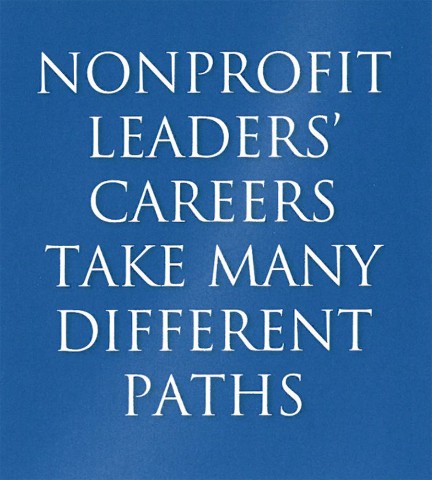
According to Penny Bailer, executive director of City Year Detroit, careers in nonprofit management aren't always a straight path. "In some cases, people zigzag," says Bailer. "You work for one organization for a while and often you leave after a few years to go to the corporate sector or another nonprofit. Then, one day you find yourself back at the organization where you began your career, but at the management level."
Bailer was one of three nonprofit executives who participated on a panel co-sponsored by the University of Michigan Career Center and the Nonprofit and Public Management Center (NPM). NPM is a collaboration between the Schools of Business, Public Policy and Social Work.
Bailer's career path was more like a U-turn than a zigzag. She started out as a piano performance major at the University of Georgia. Then, upon graduation she worked for the Department of Housing and Urban Development (HUD). Later, she decided to stay home to raise her children and found herself entrenched in the nonprofit sector as a volunteer. Over this 12-year period, her participation on multiple boards and committees led to her selection as the executive director of the Girl Scouts of America in Detroit, a position she held for 17 years before coming to City Year. She was also active in the public spotlight when elected to the Detroit Board of Education in 1999.
Susan Katz Froning, president and CEO of Nonprofit Enterprise at Work (NEW), agrees that the nonprofit career trajectory varies for many executives. "Coming to NEW," says Froning, "I spent 14 years as a lawyer at Ford Motor Company. I managed a team, negotiated deals around the world, and juggled responsibilities to multiple stakeholders. My skills were certainly transferable to the nonprofit sector. Today, I report directly to the board of trustees at NEW, manage an eight member staff, and have to multitask times ten."
NEW, a management support organization, provides a wide range of services to the local nonprofit community. Program offerings include a workshop series for nonprofit staff and directors, board trainings, technology and website assistance, the Borders Group nonprofit public library, and ResourceConnect, a nonprofit resource database.
Laurel Davenport, executive director of the South Toledo YMCA, took a more traditional route to nonprofit management. Davenport graduated from the University of Michigan School of Social Work with a concentration in Management in Human Services. She worked at the YMCA in Ann Arbor as a senior program director, where she was responsible for both childcare and camp programs.
"I had been working in childcare," says Davenport, "but really didn't know anything about camp programs when I was offered the position in Ann Arbor. But part of being a successful leader is having the energy and drive to take on a challenge." Davenport adds that acknowledging your own mistakes is also an important part of the responsibility of good leadership.
"The first year as an executive director is a blur. Everyone is checking you out, and in my case I really had to change the culture of the workplace. I also recognized that I got involved with too many things like committees and groups." In her second year as executive director, she set more focused priorities, while still maintaining strategic ties with other community organizations.
The prerequisite knowledge necessary for effective nonprofit leadership may vary slightly from one organization to another, however the executives agreed on three key ingredients for success: strong written and oral communication skills, the ability to multi-task, and flexibility.
"I spend a lot of my time in meetings," says Froning. "Some of them are planned and some of them are not. I also spend 40-50% of my time fundraising for my organization. This may or may not be in the executive director's job description but it is a reality of the sector. Overall, there is a real extrovert element to this job."
Audience members asked panelists about the differences in management positions between the corporate and the nonprofit sectors. "To me," says Bailer, "you need to find out what turns on your social justice nerve. To some extent you might be able to do this in the corporate sector. But in the nonprofit sector you do it all of the time. Ultimately, in any sector, it is important to have the maturity to know what you want to do and go for it!"
-Jennifer M. Acree graduated April '05 with a concentration in Management in Human Services and a minor in Social Policy and Evaluation.